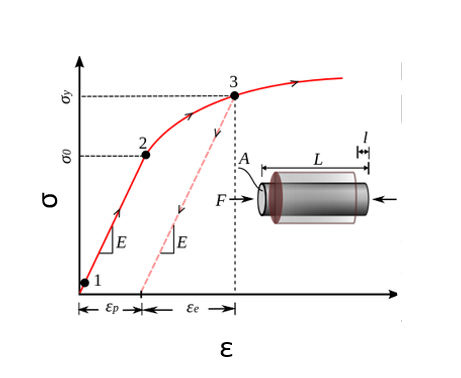Strain Measures in Large Deformation Static Analysis
For large deformation static analysis, Creo Simulate reports logarithmic engineering strain. In the limit where deformations are small, this is equivalent to strain reported for linear static analysis.
Strain measures for uniaxial strain are defined as follows, where l is the final length and L is the initial length. Note that all are equivalent in the limit where the change in length is small.
|
Linear strain
|
ε=(l-L)/L
|
|
Almansi strain
|
ε=(l2-L2)/2l2
|
|
Green strain
|
ε=(l2-L2)/2L2
|
|
Logarithmic strain
|
ε=ln(l/L)
|
The logarithmic strain tensor E can be defined using the deformation gradient tensor F, the right Cauchy-Green deformation tensor C, and the polar decomposition of C as follows:
E =ln U
where U is the right stretch tensor derived from:
C = FT.F=(RU)T.(RU) = UT.U=U2
where polar decomposition is used to find the rotation tensor R, and the right stretch tensor U.
The components of strain reported by Creo Simulate are the engineering strains gij, defined as follows:
gij=Eij where i=j
gij=2Eij where i≠j
Logarithmic Engineering Strain
Logarithmic Engineering strain for a large deformation analysis with elastoplastic materials can be understood based on the following formula:
E_yy ~= E_p + E_e
where:
E_yy — Logarithmic Engineering Strain
E_p — Plastic Strain
E_e —Recoverable elastic strain(which is approximately Sigma_t/E)

This figure shows a stress strain curve for work hardening plastic materials. The yield stress increases with increased plastic deformation. The strain can be considered to be made up of a recoverable elastic strain (εe) and inelastic plastic strain εp.
Return to Large Deformation Static Analysis Overview.